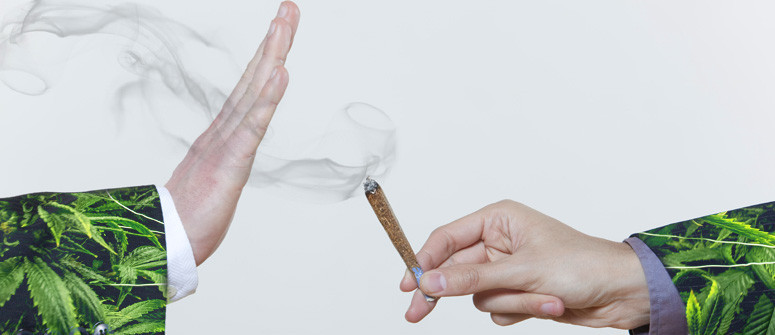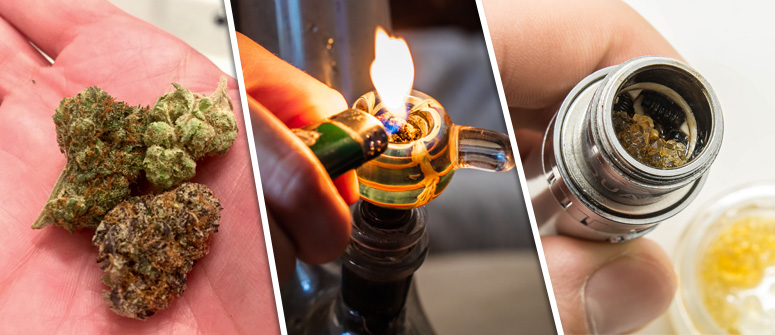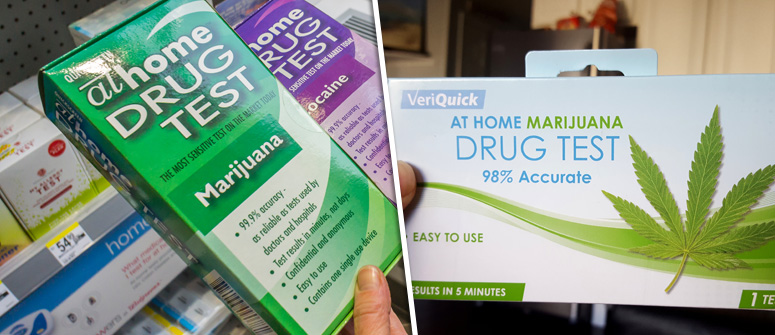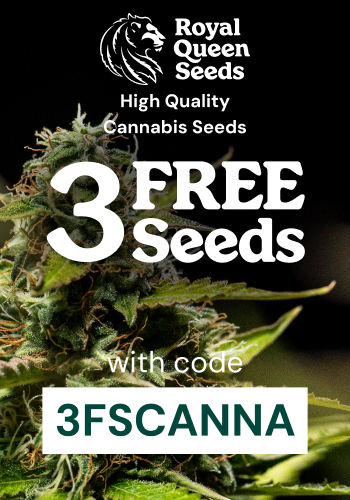Is your high feeling low? Try a marijuana tolerance break

Taking a marijuana tolerance break reduces the amount you need to smoke to get a strong high. Find out the best ways to take a T-Break.
One day, it'll dawn on you: You're smoking two blunts and not getting nearly as high as you used to with half a joint. Or, maybe you're doubling up on the dabs and still not getting baked. When this happens, there's only one fix - a T-break!
It happens to the best of us. You're flush with cash and your connection is on point and on time with fat sacks of high-grade weed. Or, you've had a great harvest and your stash is overflowing with the best homegrown you've ever smoked. Maybe, you've just discovered the joy of concentrates?
Whether you're smoking better stuff, or just smoking more of it, tolerance builds gradually.
Try one of these tolerance-busting techniques to get you back to where you need to be:
TRY A NEW STRAIN
If you've been smoking the same strain for months, it's time to change things up, even if what you have now has a high THC level. There are hundreds of cannabinoids and terpenes in weed. Some have been identified, but many haven't, and we don't even know what all these substances do. Each cannabis strain has its own unique chemical profile, so smoking something different could kick-start your high.
Moving from an Indica to a Sativa, or vice versa, might do the trick. Flowers that smell different than what you're smoking now could help, too. Terpenes give marijuana its fragrance, but some also interact with THC to influence your high. For example, Myrcene is present in almost all types of cannabis. This terpene is a potent pain reliever, but it also acts as a THC booster to give you a stronger high.
Here's a stoner life hack: Mangoes are naturally high in myrcene and can increase the perceived potency of any cannabis strain. For it to work, you have to eat this fruit about an hour before you plan to light up.
CHANGE UP YOUR GEAR

What you use to smoke has a lot to do with how high you can get. Even cleaning an old, resin-clogged bowl can make a difference. Moving up from a bowl to a bong might help, and many people say they get way higher when they vape than when they smoke.
If you've been smoking flowers, switching to extracts and upgrading to a dab rig will definitely get you higher, but it will also increase your tolerance level, and you'll eventually be right back where you started. It's still an option though!
GRADUALLY REDUCE HOW MUCH YOU SMOKE
Now, we come to some ways to take a marijuana tolerance break that can be a little painful for frequent smokers. If you don't want to stop cold turkey, try a gradual reduction by smoking less often during your day. Some people skip their ritual wake-and-bake routine, while others try only smoking at night.
This method will work, but it can be slow going depending on whether you can stick to your plan, how much you were smoking before you cut back and your individual metabolism. We'll talk about how to make your T-Break go faster in a little bit.
SHORT-TERM ABSTINANCE
You'll have to go at least 3 days (72 full hours, no cheating) without smoking to see any real difference in your tolerance level. That's how long active THC can stay in your bloodstream if you're a chronic smoker.
Remember, the longer you can refrain from smoking now, the longer it will be before you need another marijuana tolerance break later. For most people, 1 to 2 weeks is plenty.
GET 100% CLEAN - THE GOLD STANDARD OF T-BREAKS

There are plenty of reasons to get completely clean, and reducing your tolerance is one of the best. If you can get way higher than you do now by smoking way less later on, that's a definite win-win no matter how you look at it. However, you will have to abstain completely from smoking for 30 days or more to totally reset your tolerance level.
THC is fat soluable, so it hides in your fat cells and releases slowly over time. This slow release doesn't give you a fresh high (as if!), but it does cause you to test dirty and no one really knows what affect it has on your tolerance level. Everyone clears THC out their system at different rates. If you want to keep an eye on your progress, pick up a few cheap test kits; most pharmacies sell them or you can order online.
WILL I FEEL ANY TYPE OF WITHDRAWAL IF I ABSTAIN?
You might. Cannabis is not addictive, but if you're smoking every day, you might feel different if you suddenly stop. Here are some of the most common problems people face:
- Insomnia
- Slight Depression
- Anxiety
- Mood Swings
- Vivid Dreams
Remember that cannabis really is medicine, and if you suddenly stop most types of medicine, you should expect some of your symptoms to return. If it becomes unbearable, you can always start smoking again, but if you just remember that it's all part of the T-break and it'll be over soon, it will help you power through the tough part. Luckily for most people, any discomfort is minor and short lived.
CAN I MAKE MY MARIJUANA TOLERANCE BREAK GO FASTER?

You can! By maintaining a healthy lifestyle, you can reduce your cannabis tolerance faster and feel better while you're doing it. Staying active and hydrated paired with eating a balanced diet will help you flush the THC from your body faster than if you just sat around on the couch munching on junk food. Exercise will also trigger your brain to produce endorphins that'll fight off fatigue, calm your nerves and give you a nice sense of well-being.
This is also a good time to either take up a new hobby or get back into anything you enjoy doing. Staying mentally engaged not only keeps your mind off the fact you aren't smoking, it helps you fight off depression.
Take it easy when you start smoking again. Going straight back to high amounts of very strong weed will undo your T-break faster than moderate toking, and you might end up uncomfortably high for way too long, and that's not nearly as much fun as it sounds.
Here's stoner life hack #2: Chewing on black peppercorns can calm down a paranoia or anxiety-ridden high to make it a calmer, more relaxed experience.
WHAT IS TOLERANCE, EXACTLY?
Once again, even if it gets you high, cannabis is medicine, and it appears that the human body was engineered specifically to use this natural herb. We have an endocannabinoid system that can only be activated in three ways: using the body's natural endocannabinoids that we all produce, through plant-based cannabinoids or through synthetic cannabinoids made by the pharmaceutical industry.
As a protective mechanism, the human body naturally places a limit on how cannabis affects us. That's why virtually no one has ever overdosed on marijuana, but this limiting factor also allows people with cancer and other deadly diseases to be able to take extremely high doses of cannabis and still function once they develop a tolerance.
So, how does that work exactly? And, does it mean that tolerance is the same as dependence or addiction?
The brain has switches called receptors, and chemicals called neurotransmitters that flip them. Neurotransmitters can be natural or they can come from drugs like cannabis, alcohol, opiates or amphetamines. In drugs that cause addiction, the constant flipping of the switches is thought to wear them out.
So, over time, you need more and more force to flip each switch, and eventually, they could start to stick. That's why you always need ever-increasing amounts of any addictive substance to get the same effect and why some pharmaceuticals stop working altogether.
Marijuana tolerance is similar, but there's an important difference that means cannabis is not addictive. Instead of wearing out the receptors, cannabis down-regulates them. That means the body recognizes that more cannabis is being consumed, on a regular basis, so it reduces the total number of receptors available for the cannabinoids to bind to. Less active receptors means you get less high.
Reduce the amount of cannabinoids in your system, and your body will notice, react, and activate some of the previously de-activated receptors. More active receptors means you get more high. Don't over do it and you'll always be able to feel a high without taking a T-Break. This is the best example of less is more you'll ever find!
SUMMARY
Recreational cannabis users enjoy cannabis and the safe high that it produces, but too much of a good thing can result in a tolerance level that mutes the pleasurable effect you expect from smoking weed.
By smoking less or refraining completely for a short period of time, you can keep your tolerance in check. No matter what critics say, tolerance is not a sign of addiction or dependence, but rather the body's way of regulating the effect of cannabis to balance the needs of recreational users with those of medical marijuana patients.
.jpg)


.jpg)
